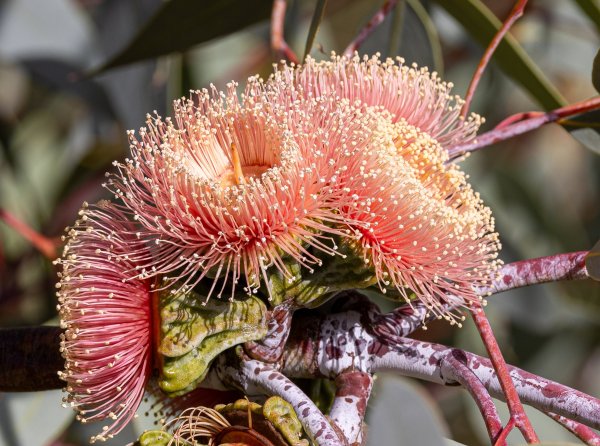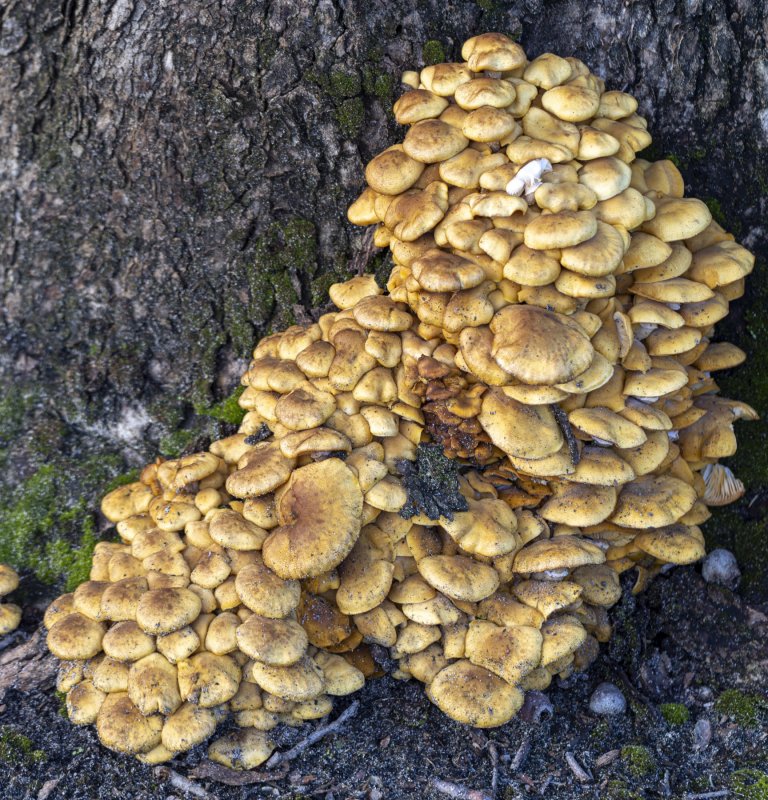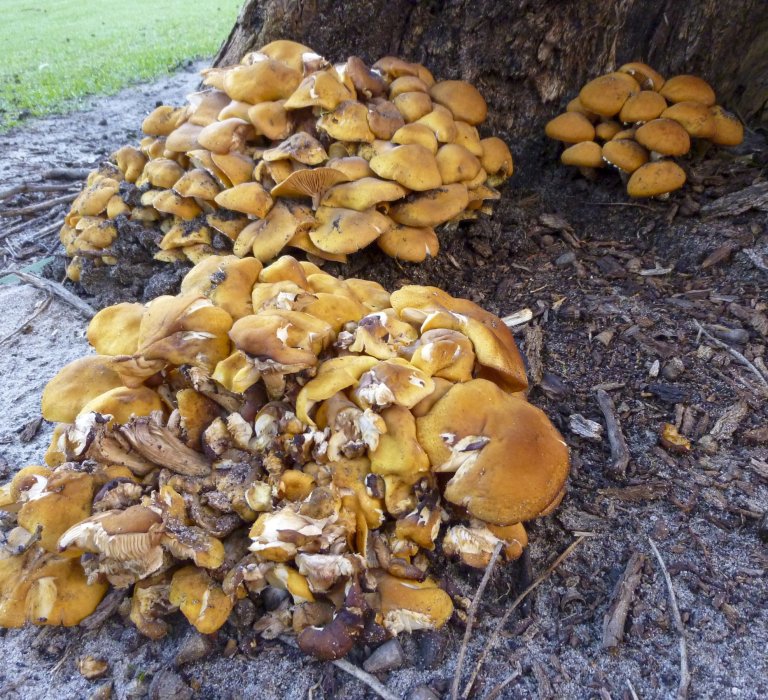
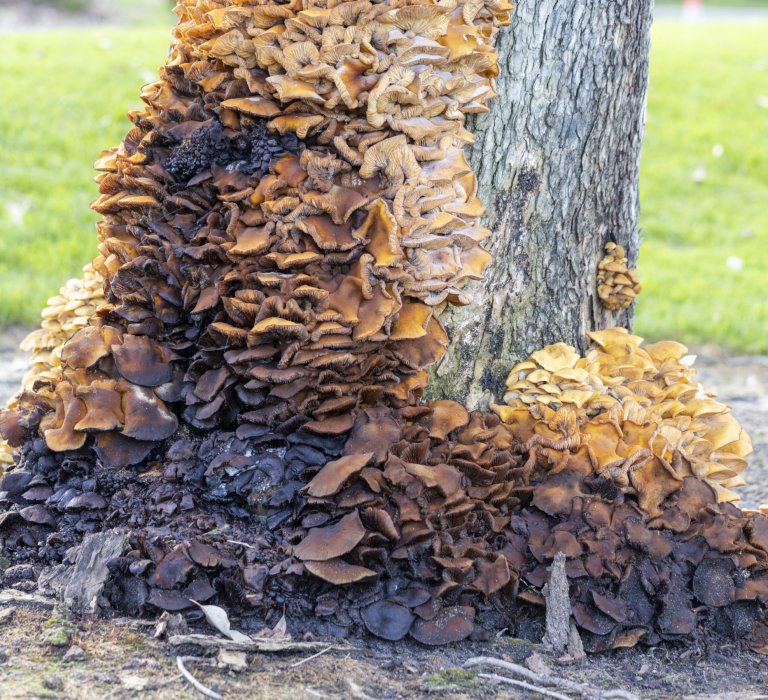
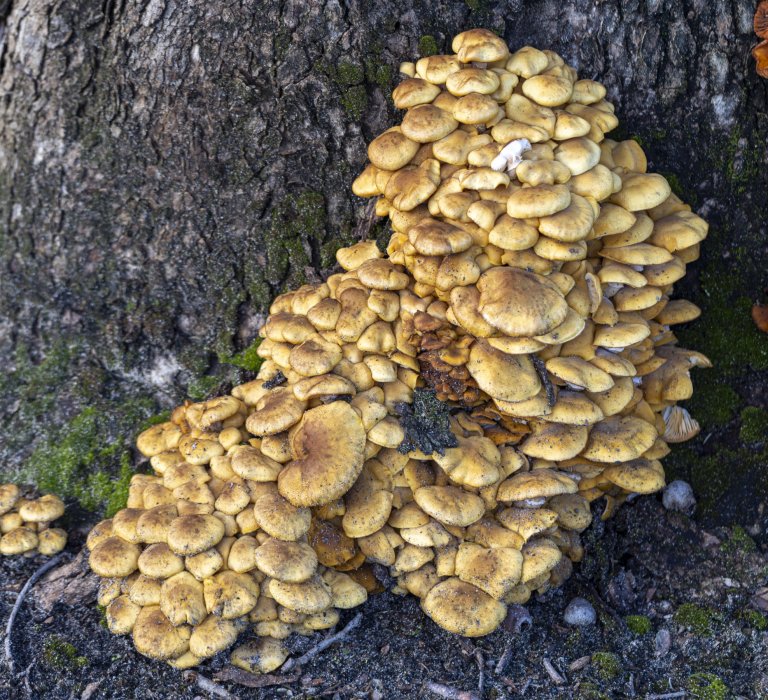
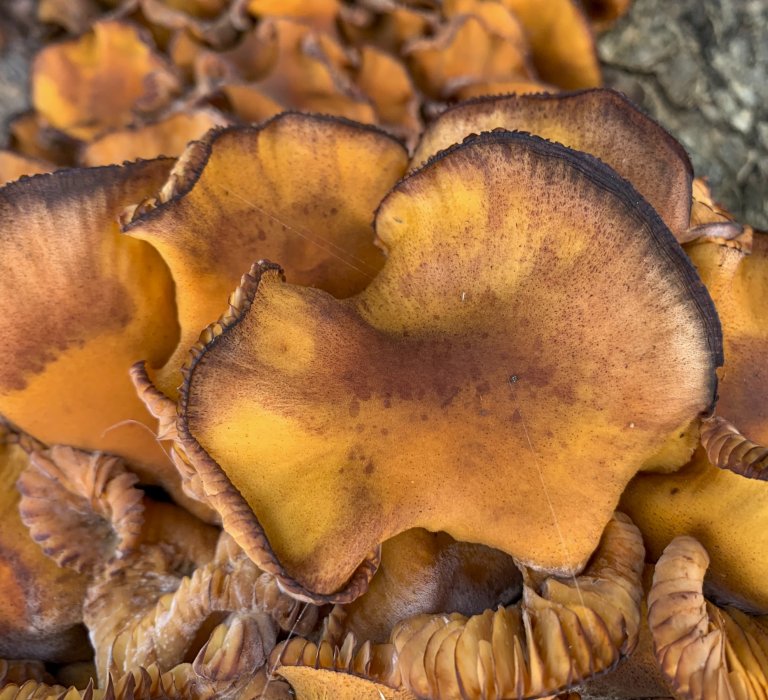
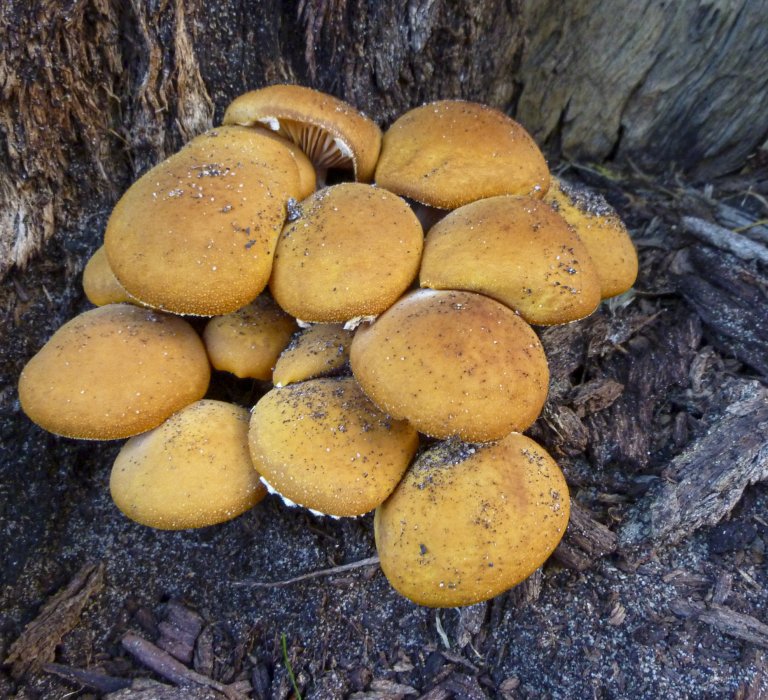
Guide Roz’s fungus of the month for June
Fungi are not plants but are in a kingdom all of their own. They play an essential role in our eco-systems as natural recyclers of organic material. They can provide food sources for animals and plants, for example many Australian marsupials feed on native truffles. Fungi can also form symbiotic relationships with plants and convert organic material into plant nutrients.
So our Guide’s ‘plant’ of the month this month is actually a West Australian native fungus called Armillaria luteobubalina, or honey fungus. Unfortunately it is a fungus that has become out of balance due to excessive clearing of native forests over a long period of time.
The honey fungus fruits in early winter and is visible as very attractive looking large clusters of golden mushrooms at the base of infected trees. Don’t be fooled, it looks lovely but it’s a slow killer of trees. Once we get some winter rain, it can be seen in Kings Park particularly on the magnificent old Tuart trees on the Tuart Lawn. It is also widespread in the Jarrah Forest area of the Western Australian Botanic Garden, where it may seem to be coming out of the ground, but it is actually fruiting from roots underground.
The honey fungus has a golden coloured cap when young, white gills, a distinctive white ring and produces copious quantities of white spores. The texture of the cap is unusual in that it is slightly rough and sandpapery.
Ask your Kings Park Guides in the Visitor Information Centre when and where you can see the honey fungus, or look for it when you take one of our guided walks. You can also pick up a map in the information centre and follow the Lotterywest Federation Walkway to the Tuart Lawn.
If you would like to learn more about the honey fungus the following resources are also available:
Fungus factsheets by Richard Robinson, published on the Department of Biodiversity, Conservation and attractions (DBCA) website
Fungi of the Perth Region and Beyond by Neale L. Bougher, published by the WA Naturalists Club and available to download on their website.
Fungi Down Under by Pat and Ed Grey, published by Fungimap Inc and on sale here.
All photos by Georgie Wilson unless otherwise captioned.
June 2024
Other news you may also like
Guide’s fungus of the month
1 July 2025A fairly common but spectacular mycorrhizal fungus found in Kings Park is this oddly...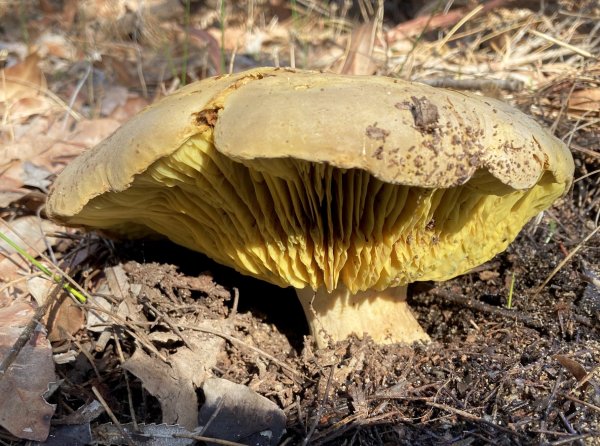 Roz Hart
Roz Hart Winter rains bring the bushland to life
16 June 2025Seasonal bushland walks begin soon The recent welcome rain falling in Perth has brought...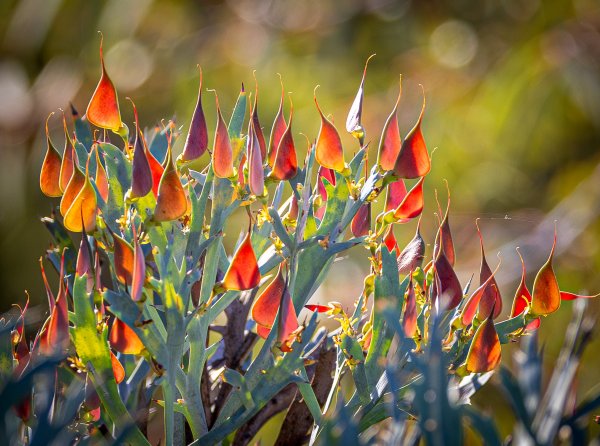
Guides’ plant of the month for June – Eucalyptus youngiana
1 June 2025The Eucalyptus youngiana or large-fruited mallee is a spectacular specimen which can be found in...